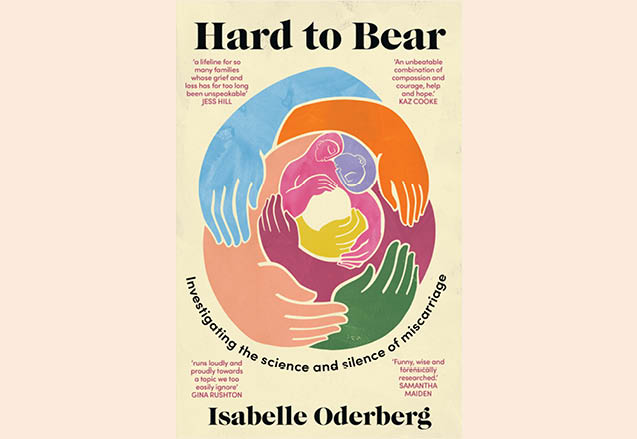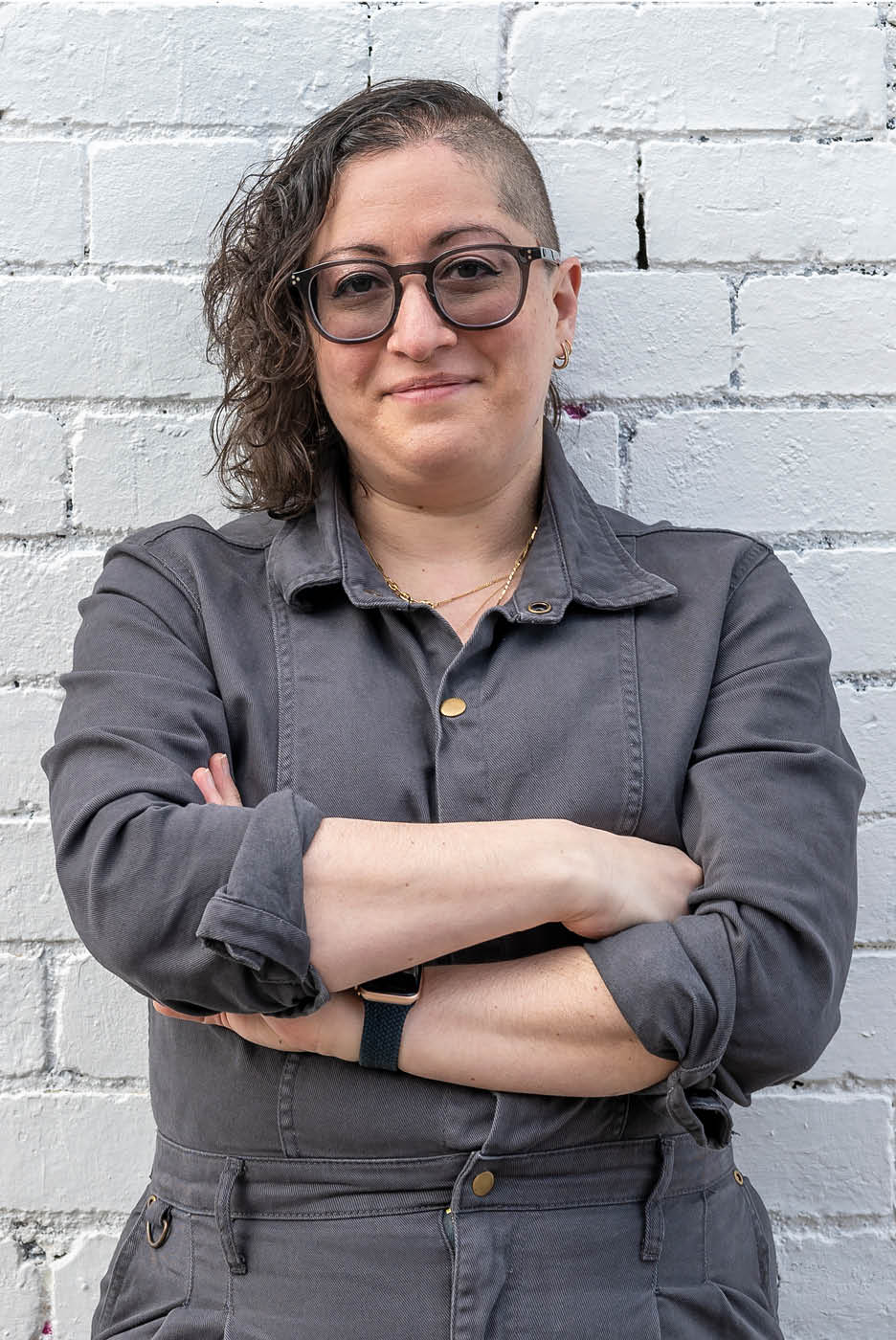Something that struck me, or perhaps floored me, when I started to investigate early pregnancy loss in Australia, is just how easy it is to find horror stories about the care patients receive . . . or indeed the total lack of care on offer.
Whenever I made a public callout, even for highly defined experiences within a specific geographic location or complication type, I would get so many responses. I would have to set aside hours of time so I could respond to every single person who messaged me. It really shouldn’t be this easy to find real-life case studies that demonstrate such serious gaps in our medical system.
As you might imagine, there are a multitude of issues that converge, as well as services that overlap, to create the sort of systemic and cultural problems that lead to these gaps in care.
In addition to the deficits in physical care, there are also cultural issues in medicine that affect how patients are treated when they seek care. This is why medical journal The Lancet, in its miscarriage series, was very clear in stating that ‘the era of telling women to “just try again” is over’. It’s a cultural distinction that doesn’t fit with what we do know about miscarriage, medically speaking. It is nevertheless persistent.
It really shouldn’t be this easy to find real-life case studies that demonstrate such serious gaps in our medical system
We hear a lot about how the Australian hospital system is under-funded. And while sometimes this is used as an excuse for sloppy care or medical judgement found wanting, there are real consequences for every Australian patient seeking care.
But what does that really mean? What does it look like? And how does it affect early pregnancy loss care? That depends in part on who you ask, because we’re not all equal in the eyes of the health system, a fact amplified during the Covid-19 pandemic.
If English is your second language, if you are queer, genderqueer, have a disability, are not white, are a woman, have mental health issues, have a lower income, are Aboriginal or Torres Strait Islander – or if you identify as any combination of the above – these are all components that can affect the quality, cultural safety or suitability of the care you receive.
In addition, the Australian health system is stretched far beyond capacity, let down by successive state and federal governments failing to give the funding needed to deliver the world-class care that we as a nation could absolutely afford, should we make that choice.
Healthcare workers have been stretched beyond what is reasonable and at some levels (for example, nursing and midwifery) are paid far below their worth. And that was before the advent of a once-in-a-lifetime global health pandemic. Winter isn’t coming for healthcare. It’s here. And it’s fucking freezing.

In 2019, the public hospital elective surgery waitlist had swelled to 890,000 patients for 2018–19. Only 760,000 patients were admitted to surgery during that time period, showing the capacity gap.
Meanwhile emergency department data for the same period showed that of the 8.4 million presentations each year in Australian public hospitals – 23,000 a day – only 71 per cent of patients were seen on time for their urgency category, down from 74 per cent in 2014–15. The overall number of presentations was a 4.2 per cent increase on the year before.
Why am I telling you this? Because before we launch into all the ways the system fails patients who experience early pregnancy loss, we have to understand that the system is failing more generally due to a lack of critical resources. We can never forget that there are a lot of doctors working hard, doing their best, who genuinely care about the people they treat. We should never forget that they exist and that not every patient has experienced the gaps I will outline, though an unacceptable number do.
*****
So. You think you’re pregnant. Maybe your boobs are on fire. Maybe you did a wee on a stick. Did you look in your diary and realise you’re a couple of weeks late? Chances are you’ll be heading to your GP. When a patient attends a GP clinic to confirm a pregnancy, the first step is usually a urine test, a blood test for hCG levels or perhaps an ultrasound if the patient is unsure of their dates.
Once a pregnancy is confirmed, the next step is a specialist referral. If you’re a public patient this would be to your local public hospital, which you would visit for the first time somewhere around 12 to 18 weeks. If you’re planning to go private, the referral would be for a private obstetrician, and they generally see patients from around nine weeks, though this can happen earlier.
GPs primarily come into contact with miscarriage or pregnancy loss when the loss is before the patient is in the care of an obstetrician or midwife. It would be best practice in the case of a suspected miscarriage to order an hCG test, or indeed two to establish whether it is rising and at what rate, and/or an ultrasound.

When a miscarriage is confirmed, the three options for management must be given and explained (medical, surgical or expectant, aka ‘natural’). If the patient opts for surgical or medical management, they are usually referred to hospital (an early pregnancy assessment service if available or emergency department) or in some cases a private clinic like the not-for-profit Marie Stopes Australia, now known as MSI Australia.
It is the only national family planning organisation in Australia and offers the full breadth of family planning services from contraception to abortion and everything in between.
Kate’s miscarriage was confirmed by her GP with blood tests. She was referred to her local hospital’s early pregnancy assessment service to arrange a D&C, but they never called her back. Luckily Kate could afford to get a D&C privately. ‘I called Marie Stopes and booked in with them and they were really good; they were really, really lovely and understanding and handled it really well.’
But when she turned up on the day, it was a challenging process. ‘It was just kind of miserable because you’re there, and this is nothing on Marie Stopes, but it’s an abortion clinic. You’re surrounded by people who don’t want their pregnancy. It’s just a different vibe.’ The cost of a D&C at Marie Stopes starts at $620 for those with Medicare.
Frontline fatigue
The Royal Australian College of General Practitioners’ (RACGP) General Practice Health Of The Nation report for 2019 showed a growing number of GPs had seen workload growth in the previous two years and 29 per cent of GPs disagreed or strongly disagreed that their work–life balance had improved over the past five years.
GPs are specialist generalist medicine practitioners and identify or treat 10,000 medical conditions. They are truly at the coalface of community medical care and they see it all. ‘I remember the Dean of Medicine at Monash University, sitting us down in first year medicine way back when saying, “You will be lifelong learners”,’ explains Royal Australian College of General Practitioners President Dr Karen Price.
‘And that’s what we are, and most of us actually enjoy it, as long as you’ve got the time, space and, frankly, sometimes the money to afford to be able to do it.’
You’re surrounded by people who don’t want their pregnancy. It’s just a different vibe
The reality is that GPs are under-funded, under-resourced and face huge pressure within a system that often doesn’t let them do their jobs in the way they would like.
Many GPs provide phenomenal supportive care to patients experiencing miscarriage. Some do not. Where care is lacking, it’s usually due to time pressures or subscribing to the outdated cultural protocols like ‘just try again’.
‘When we have systems of care that really focus on volume and activity, and disease, instead of focusing on quality and person-centred care, you need time to be able to do that, and you need the hospital or general practice or whatever service staff to have enough time to actually really see the person in front of them. If they’re rushed, stressed, hurried, and have millions of people to see, it’s going to be very hard for any health service to deliver that patient the care that’s needed,’ says Dr Price.
I should also take a moment to point out that GP care can operate differently in regional and rural areas, where many take part in shared care with public hospitals. These doctors do additional training in obstetrics so they can do much of the routine maternity monitoring, when patients can’t regularly travel the long distances required to access their nearest hospital. Many of those GPs are able to dispense drugs for medical management of miscarriage and some may even be able to perform a D&C. However, some GPs have told me that regional hospitals are making shared care arrangements more difficult and it is becoming less common.
What use is a vagina?
American radio and TV host Art Linkletter once said, ‘Sometimes I’m asked by kids why I condemn marijuana when I haven’t tried it. The greatest obstetricians in the world have never been pregnant.’
Obstetrics is the field of study for pregnancy, childbirth and the post-partum period. But like all areas of medicine, it falls prey to the same misogynistic and patriarchal views on which modern medicine (and you could say society more broadly) is built. These translate into the cultural, medical and practical ways in which patients who do not identify as male are disbelieved, misunderstood and treated with less care.
The greatest obstetricians in the world have never been pregnant
Obstetrician and gynaecologist Dr Kara Thompson says there are clear gender biases in Medicare item rebates that can’t be explained by differences in difficulty or time required for services. She points out that the Medicare benefit payable on a woman’s pelvic ultrasound is $102.20. To scan a scrotum, the rebate is $113.95.
‘This makes no sense for a number of reasons,’ she explains. ‘Firstly, female pelvic scans look at more organs and structures than a scrotum scan and the range of pathology can be more varied and subtle, endometriosis for example.
‘Secondly, the type of scanning equipment is different. Scrotum is all external and requires one type of probe. A pelvic scan on a woman is usually both transabdominal and transvaginal. This requires two different probes, and special cleaning and sterilisation procedures for the internal scan.
‘Thirdly, the time difference is significant. Pelvic scans take longer, as there are more organs and more details to be assessed. In addition, the time required to use two probes, and this often requiring a woman to go to the toilet between scans to empty her bladder and the sonographer stepping out to give the woman privacy to undress. If the sonographer is a male, a chaperone is required for an internal scan, which is a significant extra personnel cost.’
This creates a disincentive for hospitals to provide out-of-hours ultrasound services, which are expensive. ‘It goes some way to explaining why you can get an X-ray or CT any time day or night in hospital, but it is very difficult to get a pelvic ultrasound,’ says Thompson.
The Medicare benefit payable on a woman’s pelvic ultrasound is $102.20. To scan a scrotum, the rebate is $113.95
Interesting that of the pelvic ultrasounds conducted in this country, the overwhelmingly vast majority are done on women.
‘It does feel like this is such an egregious example of gender bias in medicine that we should be able to get it rectified if we made enough noise,’ Thompson adds.
Australian journalist and author Gabrielle Jackson covers this topic in her incredibly important book Pain and Prejudice, which addresses this topic broadly within the context of chronic pain. Jackson argues that, historically, women’s pain was dismissed with theories of hysteria and ‘the widespread idea that a woman is inherently irrational and brimming with uncontrollable emotions and bodily functions.’
While the medical concept of hysteria has been debunked, the cultural implications endure and have led to a raft of well-documented adverse health outcomes for women that persist today; women are less likely to be diagnosed with heart issues, medicine knows less about every aspect of women’s biology than men’s, women are less likely to be included in medical trials, and almost half of women diagnosed with auto-immune diseases will be told they are hypochondriacs or ‘too concerned with their health’.
In its series on miscarriage, The Lancet alluded to this double-standard, comparing the idea of non-interventional treatment in miscarriage as similar to treatments of other ‘women’s issues’, such as menstrual pain and menopause. Women’s pain and trauma cannot and should not be dismissed or ignored. One obstetrician described the dismissal of miscarriage and the failure to treat patients holistically to me as the ‘obstetric equivalent of a teenager being told for five years that their painful periods were normal’.
The first council of the Royal Australian College of Obstetricians and Gynaecologists was appointed in 1978 and was an all-male affair, which reflected the fact that 95 per cent of obstetricians at the time were men. But thankfully, change is afoot. By 2012, 80 per cent of the training cohort were female and predictions were being made that in the next two to three decades ‘obstetrics and gynaecology will have a predominantly female workforce’.
The gap has continued to narrow, and by 2016 men made up 55.4 per cent of obstetric clinicians. But there is still a glass ceiling. Men continue to occupy the majority of the obstetric and gynaecology department head roles at many of Australia’s biggest hospitals.
Since the 1998 amalgamation of the Royal Australian College of Obstetricians and Gynaecologists (RACOG) and the Royal New Zealand College of Obstetricians and Gynaecologists (RNZCOG) to create the Royal Australian and New Zealand College of Obstetricians and Gynaecologists (RANZCOG), just one of its 11 presidents has been a woman.
One.
In a speciality that treats vaginas.
This is an edited extract from Hard to Bear by Isabelle Oderberg, Ultimo Press, $36.99













No Comments